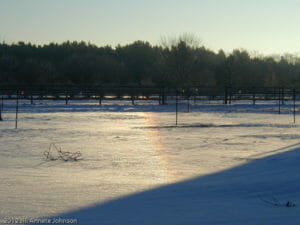Alert:
The Moon Is Not Made Of Cheese
The names have been changed to protect the innocent, I’m taking off some labels again.
“The Moon Is Not Made Of Cheese” In the words of someone we will call Mr. Aerodynamic Farmer.
Maybe you have heard the recent “news” about it being cold in Minnesota.
Maybe you are like me and have developed an aversion to “news”.
As a mid-Minnesota resident, I can say it has indeed been cold. This is not “news”. It has been cold before and I happen to think it will be cold again.
And as far as I can ascertain, the moon is not made of cheese.
Mr. Aerodynamic Farmer and and I were discussing the Minnesota cold colloquialism as
learned when we were youngsters. “The cold is the reason people in Minnesota live longer.”
We disagree because this statement was probably only true in a time period when more people spent more time outdoors in fresh air.
We decided that cold fresh air, or even hot fresh air, is healthier than recycled carbon dioxide mixed with other indoor environmental catastrophes such as dryer sheets.
We also decide that being farmers is advantageous in this type if weather. We must live in balance with nature, so we know how an can take this as an opportunity to adapt. According to science as I understand it, adaptation is built into the DNA. This is how we talk ourselves into going outside because our farming livelihood demands it, even if the windchill is 50 below.
But it is true also that the DNA changes in living beings to adapt. The amazing DNA can and does change minutely within a lifetime and according to environment then, if I understand this right. Is adhering to a comfortable chair in a warm room full of recycled stale air evolving? Or does modern technology with all of the high-hifalutin’ ego-driven vanity of modern convenience maladapt in nature?
Let’s go ask someone who studies air flow and is very in tune with environmental concerns.
He knows, Mr. Aerodynamic Farmer does, how to provide a good healthy fresh air form of ventilation to a large barn that does not require extra heat, and is warmer than the closed up house most times.
We need someone else beside me to come along and tell him how scathingly brilliant his idea is instead of some guy we will call Mike (short for mismicromiddlemanagement guy who wants to be like Mike), coming up with more ridiculous ways to waste his time money, and energy on gas-guzzling expensive unnecessary heaters, and in doing so, bites the hand that feeds Mike and 1.5 million others per year, and actually 2 million a year would be a fair annual wage for the difficulty of a small family farm occupation. We like coffee if you’d care to buy us some.
Get all the wings you can for that bowl while the price is too low as their cost will likely go up if folk are unkindly towards the hand that feeds so many. Perhaps just like the plants I spend so much time with I too have become “hardened” in my conclusions. That’s physics baby.
I am documenting a few observations about the effects of this very cold weather. Obviously the 50 below windchill and blizzard days do not have the makings of good camping weather, so I limit my outdoor excursions to 15 minutes at a time or less. Thankfully my hot flashes move through fairly consistently, getting the core temp balanced I suppose. Both extreme hot and cold seems to make me hungry and thirsty for nutritious foods. The smart socks my Mentor gave me are very helpful in this type of weather, as are fleece lined jeans and sensible low-heeled boots. In small consistent doses I get more than enough exercise trudging through the drifts and shoveling out doorways. Some people pay a lot of money to be this fit and have such great naturally curly hair too. All in balance, that’s what I say.
So now you probably want to know where my scientific proof is.
Today I will leave you with an excerpt from After The Ice Age by a Woman Canadian Naturalist Scientist, EC Pielou, since I figure she would know about the cold Canadian air flow.
Mr Aerodynamic Farmer is reading pages 100-101 of After the Ice Age on a need to know basis. Below my speech is the expert opinion of Dr. Pielou (University of Chicago Press, 1991).
After this article is said and done, I’m opening the moderated subject up for educational comments, proofs, debates, news, ideas…
by Jill Annette Johnson
Copyright 2014 jilljj.com
All Rights Reserved
“The slow response of vegetation to climatic change has interesting implications. If climate changes continuously, as it appears to, then vegetation may never succeed in catching up with it. In the words of Margaret Davis, (see footnote 23), plant (and also animal) communities are “in disequilibrium, continually adjusting to climate and continually lagging behind and failing to achieve equilibrium before the onset of a new climatic trend.””
This opinion is not universal. The opposing point of view has been advanced By H.E. Wright, Jr. another leader in the field of paleo-ecology. He assumes that vegetation and climate are at present in equilibrium (see footnote 24), and describes ancient communities that had what appear (to us) to be mismatched mixtures of species as “disharmonious.”The implication is that modern mixtures are harmonious. The argument in favor of this view (see footnote 25) is that climate changes in step-wise fashion and the last step was taken a long time ago; therefore, because the climate has not changed appreciably for a long time, vegetation has now had time to come into equilibrium with it.
There is a wealth of evidence,(see footnote 26) however, showing that climatic change is never ending. Even if major climatic “steps are comparatively quick, it is almost certain that the climate in the intervals between the steps undergoes continual lesser changes. In light of the present knowledge, therefore, Davis’s view, that disequilibrium in ecological communities is much commoner that equilibrium, is the more acceptable.
It should lead, in time, to a much needed change in popular thought. The notion espoused be so many nonprofessional ecologists–that the living world is marvelously” and “delicately” attuned to its environment–is not so much a scientifically reasonable theory as a satisfying dogma. Its abandonment might lead to a useful fresh start in environmental politics.”
23. M.B Davis, 1984 climatic instability, time lags, and community disequilibrium. In Community ecology, ed. J. Diamond and T.J. Case, 269-84 (New York: Harper & Row).
24. H.E Wright Jr., 1984, Sensitivity and response time of natural systems to climatic change in the late Quaternary, Quaternary Science Reviews 3:91-131.
25. H.E. Wright Jr., 1976. The dynamic nature of Holocene vegetation. A problem in paleoclimatology, biogeography, and stratographic nomenclature. Quaternary Research 6:581-96.
26. Wright Jr., Sensitivity and response time; see figures 1 to 8 and 11. Also L.B. Brubaker and E.R. Cook, 1983, Tree-ring studies of Holocene environments. In Late Quaternary environments of the United States, vol. 2, The Late Holocene, ed. H.E. Wright Jr., 222-35 (Minneapolis: University of Minnesota Press)


